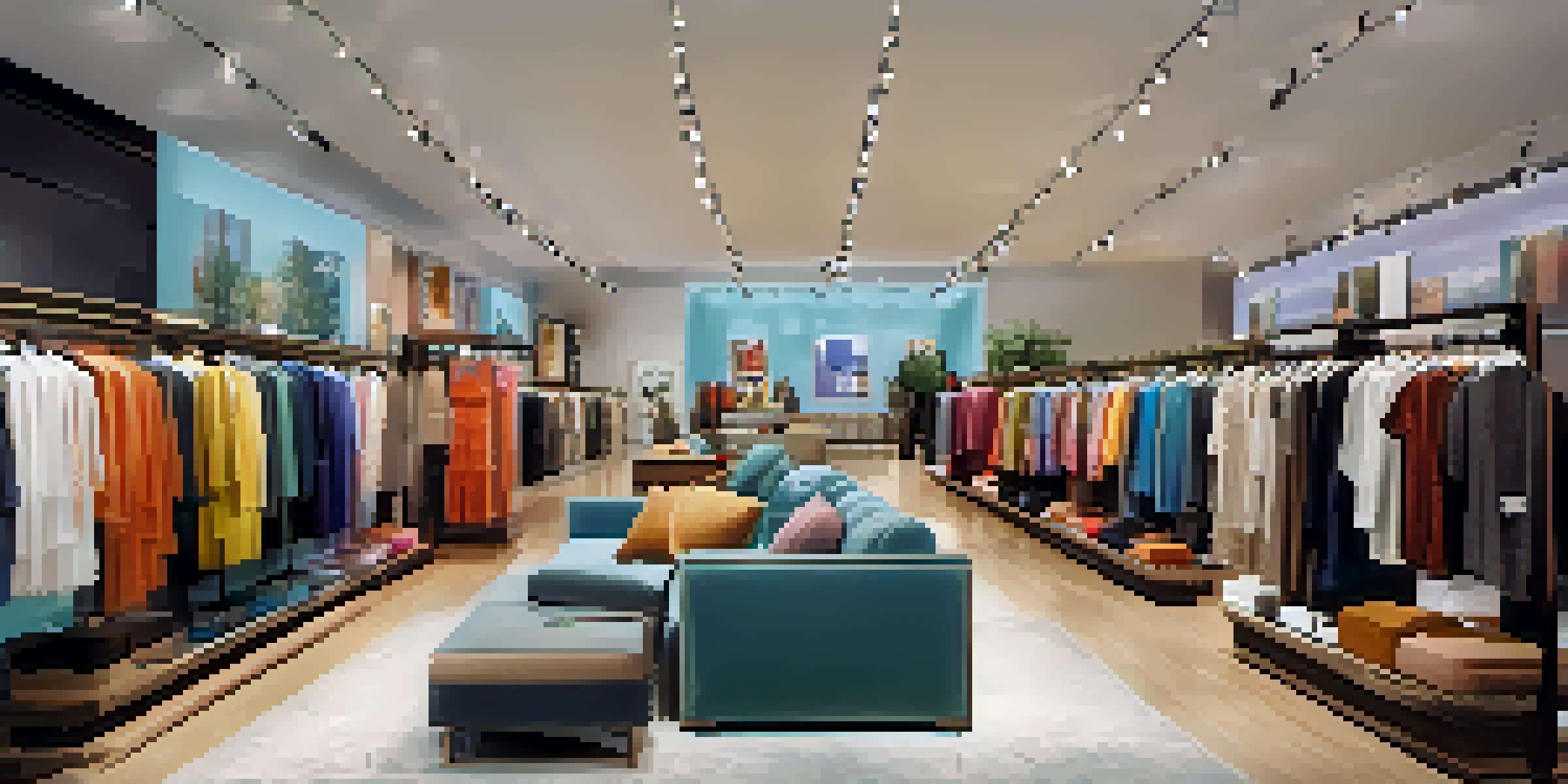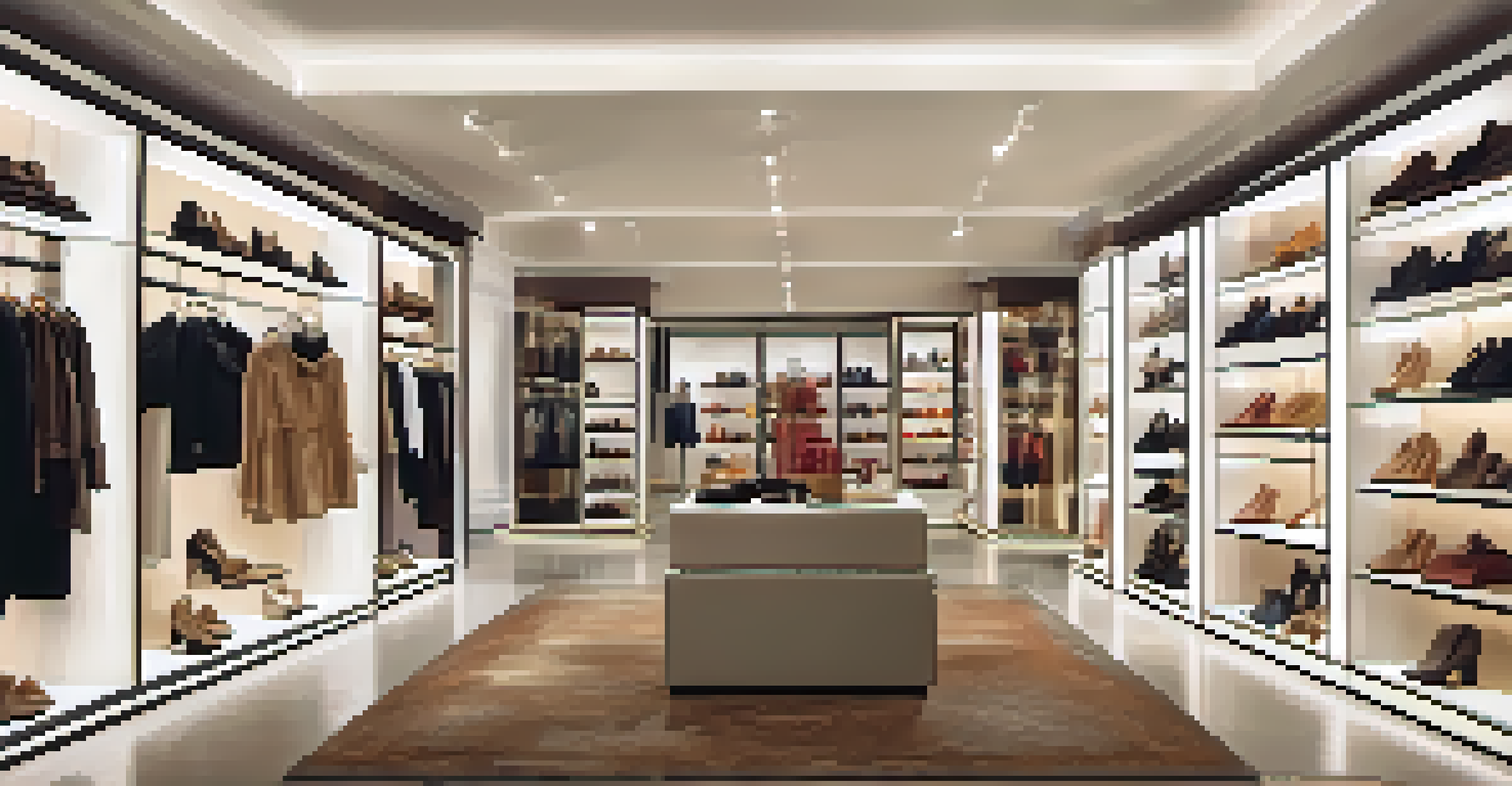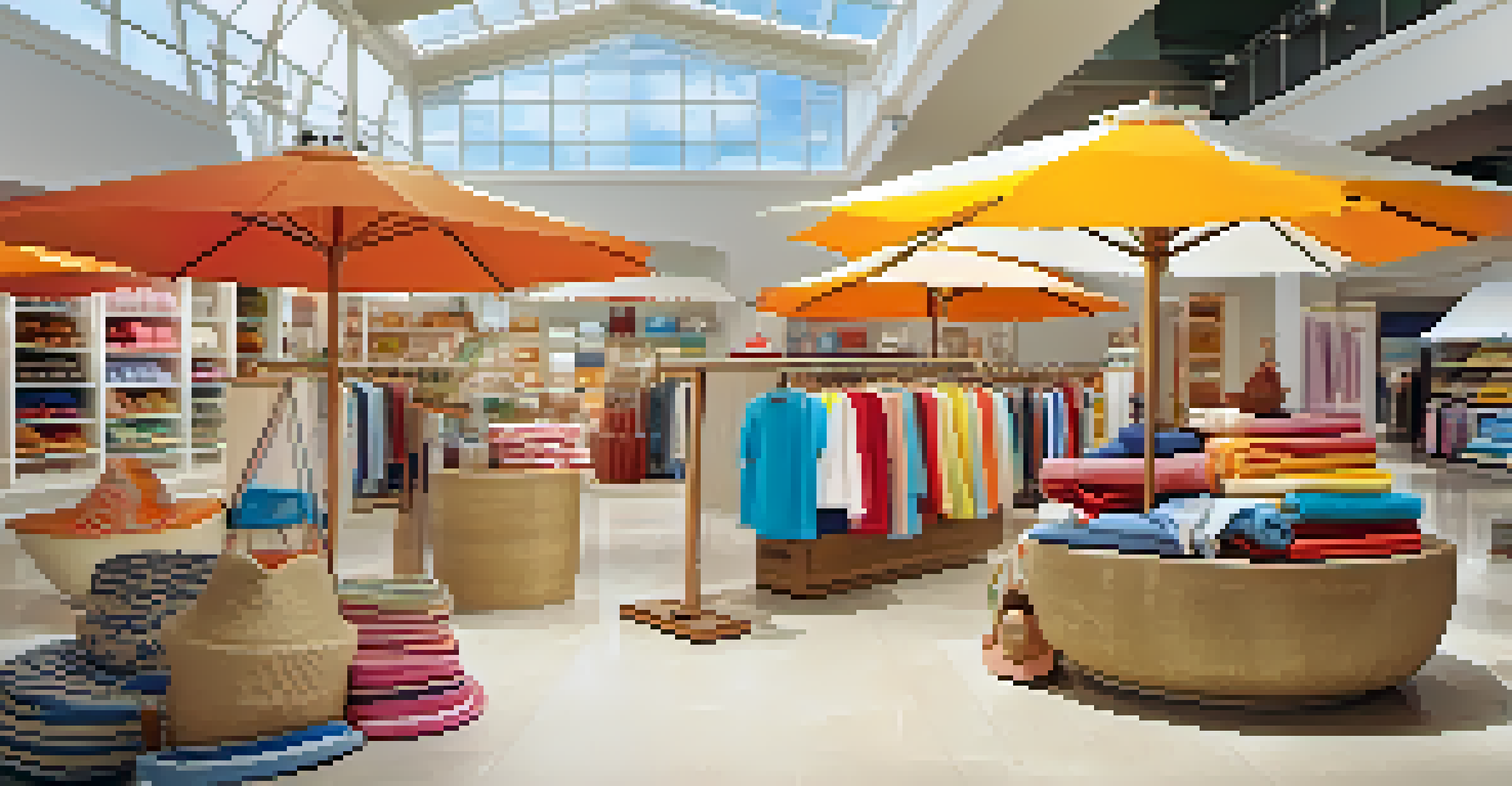Effective Use of Space in Fashion Retail Merchandising

Understanding the Importance of Space in Fashion Retail
Space in a retail store is more than just physical area; it creates an atmosphere that influences customer behavior. Think of a fashion store like a canvas—how it's arranged can either draw customers in or push them away. Effective use of space can enhance the shopping experience, making it enjoyable and encouraging purchases.
Retail is detail.
When customers walk into a store, the layout guides their journey. A well-planned space can highlight key products and create focal points that capture attention. For instance, placing seasonal items at the front can entice shoppers, while a clear path through the store can reduce overwhelm and foster exploration.
Ultimately, understanding how space affects customer interactions is crucial for retailers. Just as an artist considers each stroke, retailers must think about how every inch of space can work to their advantage. The more intentional the design, the more likely shoppers will feel drawn to the merchandise.
Creating Zones for Effective Product Display
Dividing the retail space into distinct zones can enhance the shopping experience. Each zone can serve a specific purpose, such as showcasing new arrivals, sale items, or exclusive collections. This strategic segmentation allows customers to navigate the store with ease, making their shopping journey smoother.

For example, a 'trending' zone featuring popular items can create excitement and urgency. Meanwhile, a 'relaxation' zone with comfortable seating encourages customers to linger, increasing the likelihood of purchases. By thoughtfully designing these areas, retailers can cultivate a deeper connection with shoppers.
Space Shapes Customer Experience
The layout and design of a retail space significantly influence customer behavior and purchasing decisions.
Zoning not only helps in organizing products but also plays a pivotal role in storytelling. Each area can reflect the brand's identity and values, drawing customers into the narrative. This immersive experience can make shopping feel less transactional and more personal.
Utilizing Vertical Space to Maximize Product Visibility
When it comes to retail merchandising, vertical space is often overlooked, yet it holds immense potential. Think of a well-stacked bookshelf; the higher shelves can showcase a variety of products that might otherwise go unnoticed. By using wall displays, retailers can make the most of every square foot of their store.
Good design is good business.
Incorporating vertical elements like shelving units or hanging displays not only showcases more products but also adds visual interest. Imagine a striking wall of shoes or a cascading display of accessories that draws the eye upward. This technique can create a sense of abundance and keep the space dynamic.
Moreover, engaging customers at different heights can cater to various demographics. For instance, lower displays appeal to children, while taller fixtures attract adults. By considering the height of your displays, you can create an inclusive shopping experience that appeals to everyone.
The Role of Lighting in Fashion Retail Space
Lighting is a powerful tool in retail merchandising, as it can dramatically affect the mood and atmosphere of a space. Think of how a cozy café feels different from a brightly lit office; the same principle applies to retail environments. Proper lighting can highlight merchandise and create an inviting ambiance.
Strategically placed lights can direct attention to specific products or displays, making them pop. For example, spotlights on a new collection can create a sense of exclusivity, while softer lighting in lounge areas can encourage customers to relax and browse. This balance of light can enhance the overall shopping experience.
Zoning Enhances Shopping Flow
Creating distinct zones in a store allows for easier navigation and fosters a deeper connection with the brand.
Moreover, lighting can also affect the perception of color and texture, which are crucial in fashion retail. A well-lit space can make products appear more vibrant and appealing, leading to increased sales. By mastering the art of lighting, retailers can transform their space into a captivating environment.
Incorporating Technology for Enhanced Customer Interactions
In today's digital age, technology can play a significant role in retail space optimization. Interactive displays, digital signage, and virtual fitting rooms can engage customers in innovative ways. Imagine walking into a store where you can see how an outfit looks on you without trying it on—this is the future of shopping.
Using technology not only enhances customer experience but also provides valuable data for retailers. By tracking foot traffic and customer interactions with digital tools, stores can adjust layouts and displays based on real-time insights. This adaptability can lead to improved sales and customer satisfaction.
Additionally, integrating technology can create a seamless omnichannel experience. For instance, customers can check inventory online and see if a product is available in-store, bridging the gap between digital and physical shopping. This holistic approach can foster loyalty and keep customers coming back.
Creating Visual Merchandising that Tells a Story
Visual merchandising is all about storytelling, and effective use of space can amplify that narrative. Each display should communicate a cohesive theme, whether it’s a seasonal trend, a brand story, or a lifestyle concept. Imagine walking through a store that feels like a curated gallery—this is the power of storytelling in retail.
By using props, signage, and color palettes, retailers can create immersive experiences that resonate with customers. For example, a beach-themed display in summer can evoke nostalgia and make shoppers crave vacation vibes, thereby increasing sales of relevant products. This emotional connection is key to successful merchandising.
Technology Transforms Retail Spaces
Integrating technology into retail environments enhances customer interaction and provides valuable insights for optimization.
Furthermore, storytelling through visual merchandising encourages customers to visualize themselves using the products. When shoppers can see how items fit into their lives, they are more likely to make a purchase. This is why crafting a compelling narrative through space is essential for any fashion retailer.
Maintaining Flexibility in Retail Space Design
In the fast-paced world of fashion retail, flexibility in space design is vital. Trends change rapidly, and retailers need to adapt their displays and layouts to keep up. Think of a fashion store like a chameleon; it should be able to shift and change based on current styles and customer preferences.
Creating modular displays that can be easily rearranged allows for quick updates without significant investment. For instance, a retailer can swap out merchandise or adjust the layout for a seasonal promotion, keeping the shopping experience fresh and exciting. This adaptability can keep customers returning to see what’s new.

Additionally, maintaining flexibility can also help retailers respond to customer feedback. If a particular display isn’t resonating, being able to pivot quickly can make all the difference. This responsiveness shows customers that their opinions matter, fostering a loyal customer base.